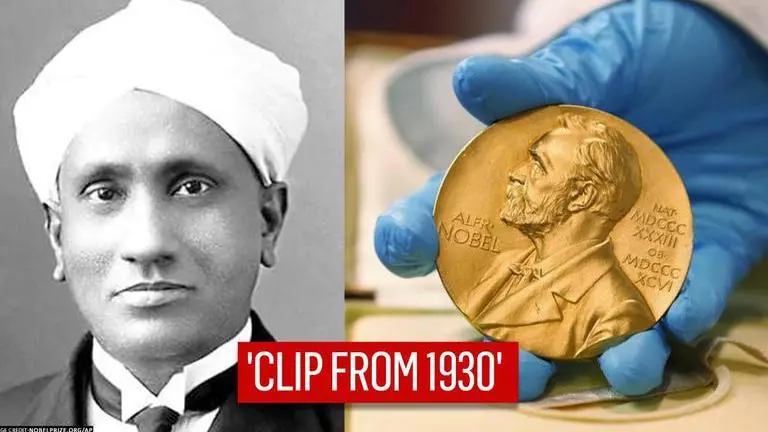Updated 7 November 2020 at 19:01 IST
CV Raman's Birth Anniversary: Nobel Prize shares 9-decade-old video of the laureate, watch
To mark the 132nd birth anniversary of Nobel Prize-winning physicist, CV Raman, the Committee shared the clip from 1930 when he visited Stockholm for the award.
- World News
- 3 min read

To mark the 132nd birth anniversary of Nobel Prize-winning physicist, Sir Chandrasekhara Venkata Raman, more popularly known as CV Raman who was born on November 7, 1888, the Committee shared the clip from 1930 when he arrived in the UK to receive one of the most prestigious awards in the world. His contribution to science from 'Raman Effect' to 'Raman lines' and his spectacular theories on the behaviour of light led him to win the Nobel Prize in Physics on December 10, 90 years ago. On his birth anniversary, the Nobel Prize Committee shared the video from the time when CV Raman had visited Stockholm to receive the honour. Watch the black and white video:
On the eve of Sir Chandrasekhara Venkata Raman's birthday, take a look at this clip from 1930 when Sir Raman had just arrived to Stockholm, Sweden to receive his Nobel Prize at the Nobel Prize Award Ceremony on 10 December. #NobelPrize pic.twitter.com/KgU1rTAO1Q
— The Nobel Prize (@NobelPrize) November 6, 2020
Here are some facts about the Nobel Prize-winning physicist:
- First appointments
CV Raman was appointed as the first Palit Professor of Physics at the University of Calcutta in 1917, but he quit his government service. Even while he was teaching in Kolkata, Raman continued to carry his research at the Indian Association for the Cultivation of Science where he later became an honorary scholar.
Advertisement
- Discovery of Raman effect
While he was at IACS, Raman made a ground-breaking discovery which earned him a Nobel Prize in Physics on February 28, 1928. Raman also discovered the evidence of the quantum nature of light by observing the scattering of light which was later known as 'Raman effect'. February 28 is also celebrated as National Science Day because Raman was awarded the Nobel Prize on that day. He later disclosed that his discovery of scattering of the light was inspired by the 'wonderful blue opalescence of the Mediterranean Sea' while he was on his way to Europe in 1921.
- Raman had a collaborator
One of the lesser-known facts is that Raman had a collaborator in his experiment of 'Raman effect', KS Krishnan. However, he did not share the Nobel Prize, due to some professional differences between the two. Raman had still made it significant about the Krishnan's contribution to the discovery during his acceptance speech. Dr Ernest Rutherford, the discoverer of the atomic nucleus and proton, had referred to the notes made by Raman on spectroscopy during his presidential address to the Royal Society in 1929. Raman was also acknowledged by society and was presented with a knighthood.
Advertisement
- Was rooting for Nobel Prize
Since the discovery of 'Raman effect', he was hoping for a Nobel Prize since 1928 and finally bagged it two years later which also made him the first Asian and non-white individual to win the prize. It was in 1932 when he along with Suri Bhagavantam discovered the quantum photon spin.
- Stamp of CV Raman
On his first death anniversary, the Indian Postal Service published a stamp of CV Raman along with the reading of his spectroscopy and a diamond on the background.
Image Credits: Wikimedia Commons
Published By : Aanchal Nigam
Published On: 7 November 2020 at 19:02 IST

